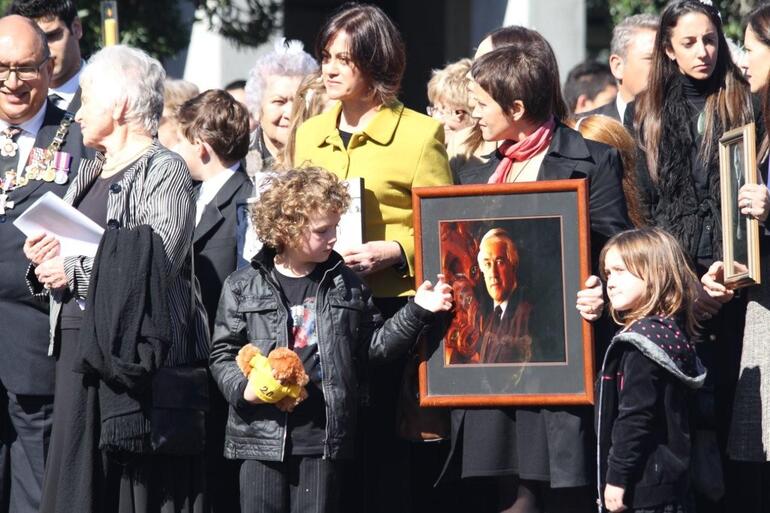
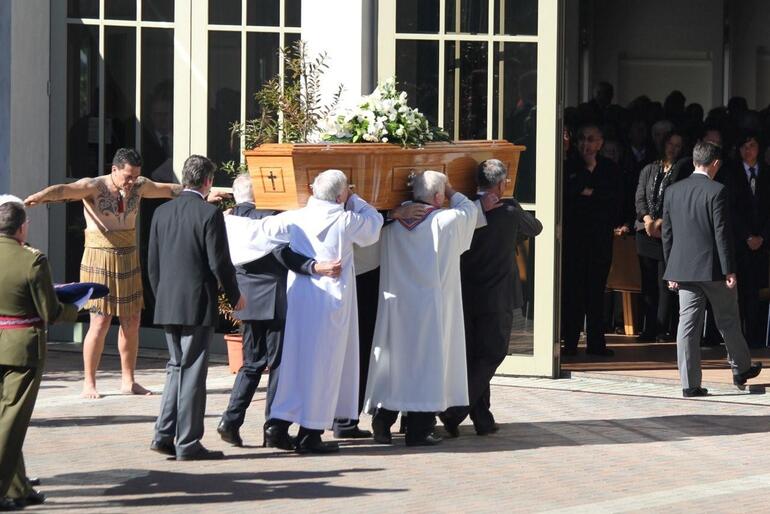
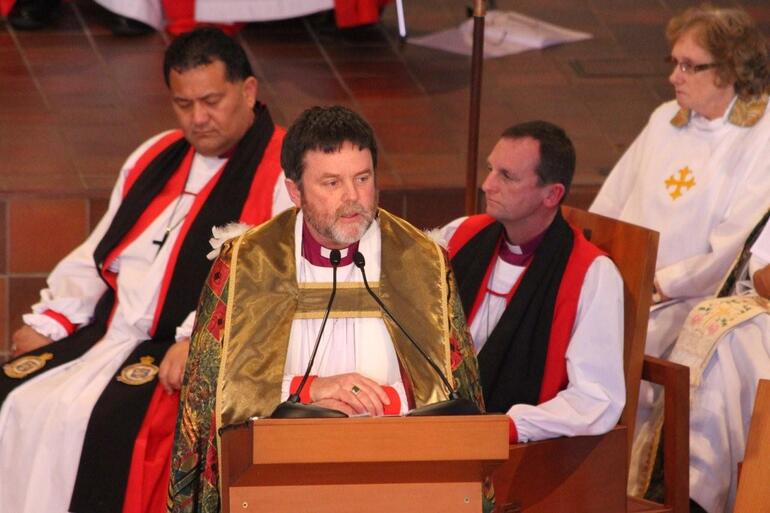
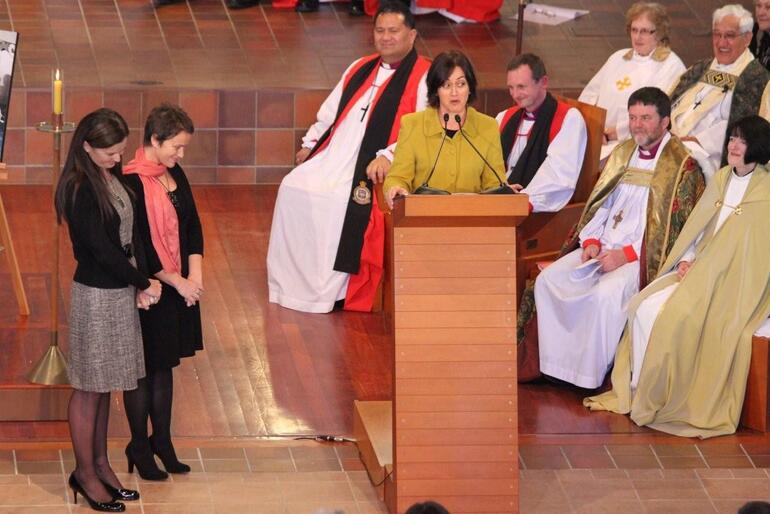
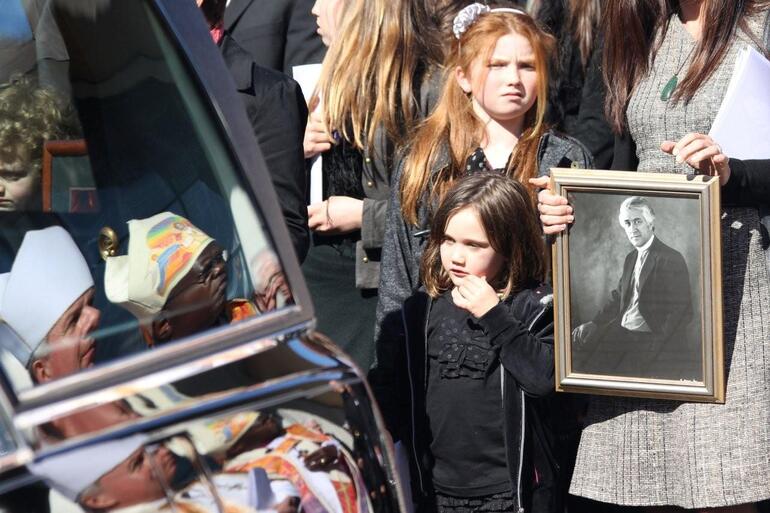
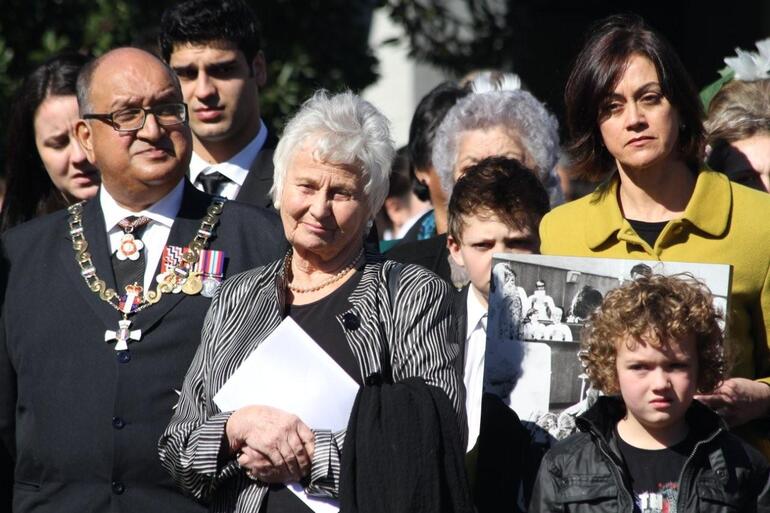
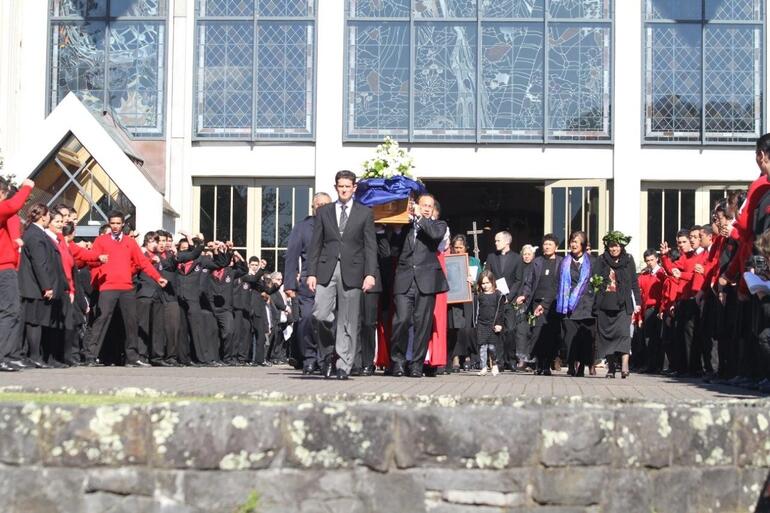
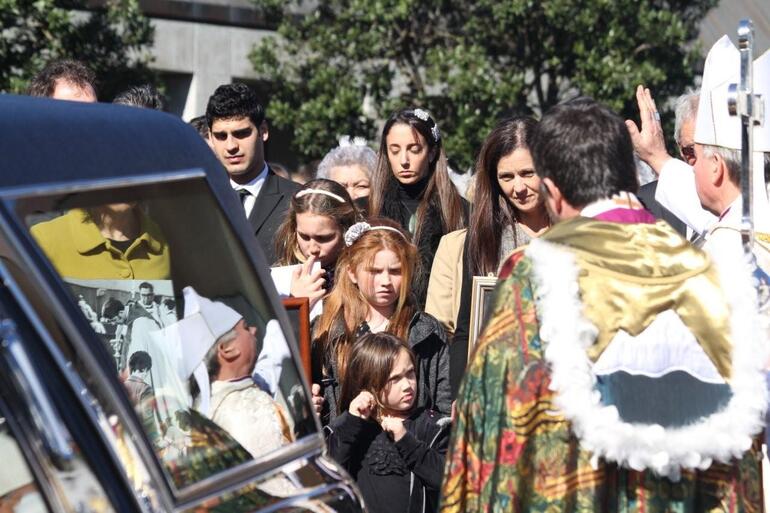
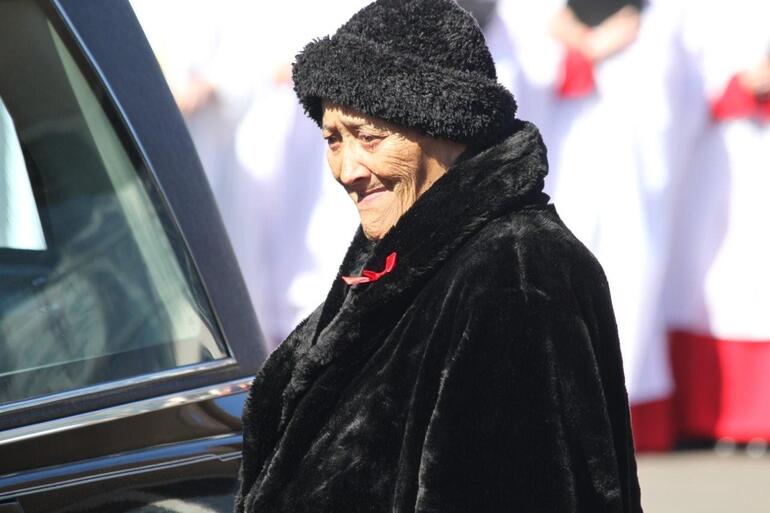
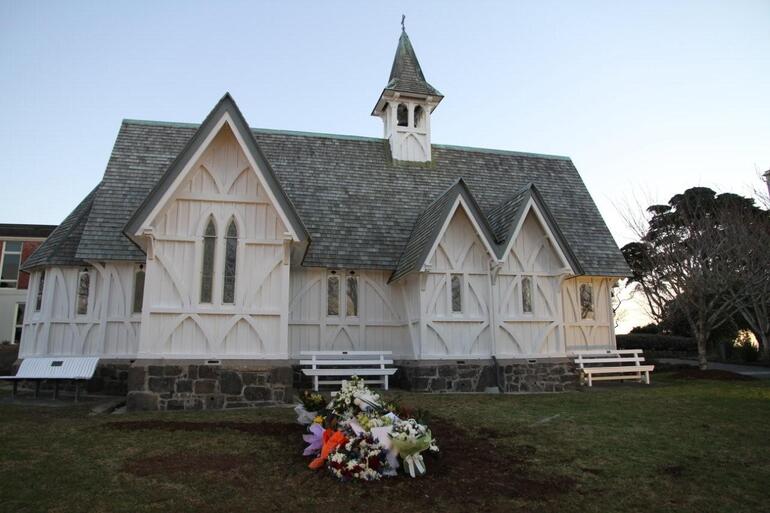
As the shadows lengthened on a still Auckland winter’s afternoon, Sir Paul Reeves was accorded a unique and final honour.
He was laid to rest on the gentle north-facing lawn that leads up to the St John’s College Chapel, where he had worshiped as a young ordinand.
No other soul lies in that lawn, Bishop Kito Pikaahu told the gathered mourners.
And no other will lie there in the years to come.
So ended the funeral ceremonies for Paul Alfred Reeves, Bishop, Archbishop, Governor General, Educator, Diplomat and Knight of the Realm.
He’d begun his final day’s journey at 9:30am, when his funeral cortege left the Church of the Holy Sepulchre in Grafton.
The funeral procession slowly wended its way through the domain – and was then met by a slow-marching military escort, who accompanied the hearse along Parnell Rd to the forecourt of the cathedral, followed by busloads of Taranaki iwi.
The funeral service began at 11am with a welcome from Dean Jo Kelly-Moore, who described a moment in time when “we are holding our breath, surrounded by love, and hope in resurrection love.”
The Archbishop of York, Dr John Sentamu, delivered a message of condolence from the Archbishop of Canterbury, which was followed by a bidding, the sentences – John 11:25 and Matthew 11:28 – the remembrance and the hymn Give Thanks for life, the Measure of our Days.
Sir Paul and Lady Beverley’s daughter Bridget Jakecivech read for the Wisdom of Solomon 3: 1-9 (“The souls of those who have pleased God are safe in his hands and protected from pain…” ), and her sister Jane Reeves then read Ephesians 3:14-19 (“I pray that you may have the power to comprehend…the love of Christ…”)
After the anthem Greater Love, Sir Anand Satyanand read the Beatitudes (Matthew 5: 1-12) and Bishop Kito Pikaahu led the singing of Piko Nei.
The service then moved into a time of tributes – with each speaker reflecting on one of four aspects of Sir Paul’s ministry: to the church, to education, to the wider community and to Maoridom.
Archbishop David Moxon spoke of sitting with Sir Paul after he’d been told he was terminally ill – and was ruminating on his life.
“You learn a lot about yourself when you’re facing death,” he’d told Archbishop David.
“Having said all that, I am a priest and a bishop. That’s what I am."
“He said this with considerable emotion, as if he was summing up his inner being," Archbishop David recalled.
“I got the impression that everything else in his life story took its bearings, at least in part, from this identity as a Pihopa a iwi.
“Whether as a Governor General, a United Nations Observer, an ahorangi, a Commonwealth delegate, a university chancellor, or a public speaker, all of these roles were informed by an indelible ordination.”
Derek McCormack, the Vice-Chancellor of the Auckland University of Technology, said Sir Paul had given infinitely more to AUT than a part-time chancellor could be expected to provide.
AUT is a new university, and was previously a polytech. But when Sir Paul agreed to be its chancellor he put paid to any sense of inferiority students and staff might have – and swept them up “in gusts of possibility”.
Derek McCormack recalled standing alongside Sir Paul at numerous graduations. Sir Paul was, he said “utterly present” to each of the graduating students.
He saw then that Sir Paul was not just a mere chancellor – “he was the father of the university in its care for its students.”
Sir Don McKinnon spoke of Sir Paul’s many contributions to the commonwealth, and Sarah Reeves paid tribute on behalf of her two sisters, Jane and Bridget.
Bishop Philip Richardson preached the homily – and said he was doing so with some trepidation.
He’d suggested to Sir Paul that he should write his own final sermon, and that he, Bishop Philip, should merely deliver it.
Sir Paul went along with that idea.
But alas, he became too ill too quickly to write it.
Bishop Philip then suggested that someone else might be better equipped to write and preach the homily. Sir Paul’s response to that suggestion was terse and to the point: "You're it," he'd said.
Bishop Philip's trepidation, in part, he said, was because Ta Paora "was such a crafter of the written and spoken word, effortlessly illuminating quite complex issues, or making powerful points with story and humour…”
Even so, said Bishop Philip, the essence of Sir Paul’s faith “is found not in his words but in his life, in who he has been for us.
“His life has proclaimed a simple but demanding message. 'That I am utterly, profoundly, unconditionally and unreservedly loved, and so are you and so is every other living being… We are created in love, we are redeemed by love – and we are called to love.'”
The service continued, with prayers, the commendation, the blessing of the casket, the proclamation of Sir Paul’s many titles by the New Zealand Herald of Arms Philip O’Shea… towards the final blessing and recession.
And then Sir Paul was carried shoulder-high from his cathedral for the last time, to the hearse that carried him to his final resting place.
May he rest in peace, and rise in glory.

















Comments
Richard Tankersley
Saturday 05 November 2011 10:29:34 am
Log in or create a user account to comment.